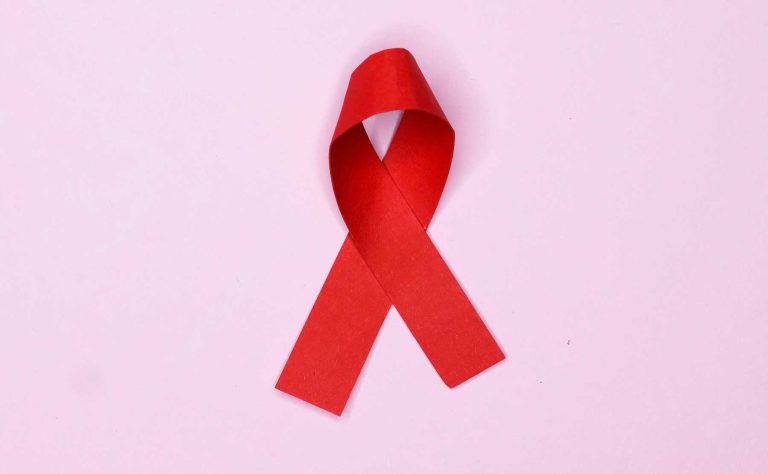Contrary to popular belief, HIV remains a serious public health concern in Canada. New HIV diagnoses rose by a startling 25% in 2022.1 Each week, it’s estimated that 35 Canadians are diagnosed with the condition, facing comorbidities such as mental health concerns, viral hepatitis and kidney and liver disease that negatively impact their quality of life.2, 3 These complications also have a significant effect on healthcare spending, with each diagnosis expected to cost an average of $1.3 million.4
While advancements in treatment have made it possible to live a full life with HIV, prevention plays a critical role in ending the HIV epidemic.
The prevention landscape in Canada is marked by a combination of dedicated efforts and significant challenges. On one hand, a committed network of healthcare providers, community organizations, and people impacted by HIV contribute passionately to prevention efforts. On the other hand, our healthcare system is stretched thin. Barriers to education and prevention services keep these initiatives from making the kind of impact we need.
Barriers to Prevention Services
HIV prevention tools have been successfully leveraged to avert transmissions across the country. Condoms help protect people from HIV and other sexually transmitted infections. Oral pre-exposure prophylaxis (PrEP) can reduce the risk of acquiring sexually transmitted HIV.5 Long-acting, injectable PrEP is an exciting development that offers an alternative for individuals who need or want different PrEP options.
While options are available to Canadians, individuals seeking care and prevention services still face many obstacles:
- Financial constraints: Currently, oral PrEP is publicly reimbursed for key populations in British Columbia, Alberta, Saskatchewan, Manitoba, the Yukon and Prince Edward Island, as well as to registered First Nation and Inuit people under the Federal Non-Insured Health Benefits Program. Other provinces offer limited coverage, which pose affordability issues for some individuals.6 The cost and uneven coverage for PrEP continue to hinder access to this helpful tool, regardless of modality.
- Geographic challenges: Those in remote and rural areas lack convenient access to HIV services while the extremely high demand in urban centres strains the system, making it hard for individuals to access effective and safe care.7
- Information gaps: Some communities don’t have access to the right information and remain unengaged in prevention care, resulting in the inequitable distribution and uptake of these tools and services.8
- Stigma: Stigma surrounding HIV, as it relates to sexuality, gender and other factors, creates an environment where people are not comfortable seeking support or learning about prevention options.9

“With individuals facing such complex and overlapping challenges, the need for culturally informed care is critical,” says Ben Klassen, Associate Director of Research at the Community-Based Research Centre (CBRC). “Care providers must be intersectional in their approach, recognizing that people’s healthcare needs are shaped by multiple factors beyond just their sexual orientation. This means avoiding assumptions and ensuring no judgments are made during patient interactions.”
Pursuing Intentional Solutions
Organizations like the CBRC are working to address barriers and gaps in care while advancing HIV prevention efforts.

“Through our long-standing research initiatives, we try to understand the diverse and evolving needs of 2SLGBTQI+ people in Canada affected by HIV,” says Michael Kwag, Executive Director of CBRC. “We look at gaps in education, access and support needs related to our social determinants of health, and we share our learnings with others in the HIV community to lift up all of our efforts.”
Part of CBRC’s work involves identifying structural gaps for strengthening prevention efforts with affected communities, today and into the future. Increased testing and enabling more consistent engagement throughout the care continuum remain top priorities for HIV in Canada. Their research also suggests that new medical interventions like long-acting PrEP present an opportunity to reach individuals who have not engaged with other modalities, increasing overall PrEP uptake.
The key, according to Kwag and Klassen, is to ensure those who could benefit the most from these solutions have adequate information, access and support.
The Government of Canada recognizes the importance of ending this epidemic and has made strides to address it, specifically within marginalized communities. The 2020-2022 progress report on Canada’s Action Plan on Sexually Transmitted and Blood-Borne Infections (STBBIs) highlights significant progress, including a temporary $17.9 million funding initiative to improve access to HIV testing with a focus on marginalized communities, and support for the 24th International AIDS Conference. The government also focused on addressing STBBIs in Indigenous communities, enhancing culturally safe health services, and increasing community-based health initiatives. These efforts aim to reduce STBBI rates and improve public health outcomes.10
Community leaders like CBRC advocate for this type of commitment to continue. Government leaders must remain focused on monitoring PrEP use to enable data-driven decisions. Ultimately, we must reduce barriers to HIV prevention regimens, along with treatment and support services, for priority populations. By ensuring equitable access to these critical tools, we can empower individuals to protect themselves and work towards the goal of reducing new HIV transmissions. Continued investment and policy action are needed to close gaps in access and uphold the right to comprehensive healthcare for all.
“To advance HIV prevention efforts in Canada, we must leverage new tools while addressing systemic barriers within our current patchwork system of primary and community care,” urges Kwag. “This requires meaningful collaboration across government, healthcare providers, industry and community. It means investing in organizations that lead on-the-ground support. We remain committed to collaborating with all stakeholders to achieve and celebrate the UNAIDS targets, with the ultimate goal of making Canada one of the first countries in the world to end the HIV epidemic.”
He adds, “Our overstretched health system needs the resources and infrastructure to drive real change. Together, we can turn the promise and potential of prevention, treatment, and support tools into a complete circle of care for those who need it most.”
This story was made possible with support from Gilead Sciences, Canada Inc.

1 – HIV in Canada: 2022 Surveillance highlights. Canada.ca. https://www.canada.ca/en/public-health/services/publications/diseases-conditions/hiv-2022-surveillance-highlights.html
2 – PHAC. HIV in Canada, Surveillance Report to December 31, 2020. https://www.canada.ca/en/public-health/services/
3 – Taiwo et al. Treatment and comorbidity burden among people living with HIV: a review of systematic literature reviews. J Drug Assess. 2022 Dec 23;12(1):1-11. doi: 10.1080/21556660.2022.2149963. PMID: 36582675; PMCID: PMC9793945.
4 – Canadian AIDS Society. The economic Cost of HIV/AIDS in Canada. https://www.cdnaids.ca/wp-content/uploads/Economic-Cost-of-HIV-AIDS-in-Canada.pdf
5 – CATIE. HIV Basics. https://www.catie.ca/essentials/hiv-basics.
6 – Gaspar, M. et al. HIV pre-exposure prophylaxis (PrEP) should be free across Canada to those meeting evidence-based guidelines. The Canadian Journal of Human Sexuality, 31(3), 2022, 309-313. https://doi.org/10.3138/cjhs.2022-0004.
7 – Hempel et al. Pre-exposure prophylaxis for HIV: effective and underused. CMAJ September 06, 2022 194 (34) E1164-E1170; DOI: https://doi.org/10.1503/cmaj.220645.
8 – Hempel et al. Pre-exposure prophylaxis for HIV: effective and underused. CMAJ September 06, 2022 194 (34) E1164-E1170; DOI: https://doi.org/10.1503/cmaj.220645
9 – Hempel et al. Pre-exposure prophylaxis for HIV: effective and underused. CMAJ September 06, 2022 194 (34) E1164-E1170; DOI: https://doi.org/10.1503/cmaj.220645
10 – Government of Canada. (2022). 2020-2022 Progress Report on the Action Plan on Sexually Transmitted and Blood-Borne Infections. https://www.canada.ca/en/public-health/services/publications/diseases-conditions/2020-2022-progress-report-action-plan-sexually-transmitted-blood-borne-infections.html


